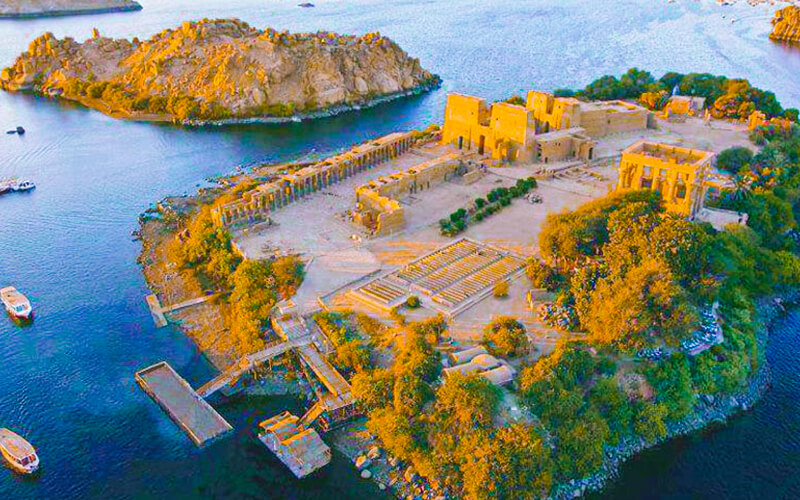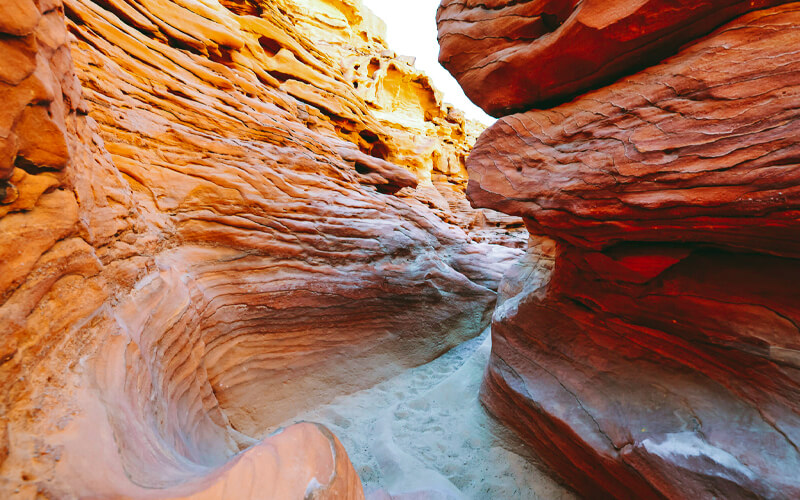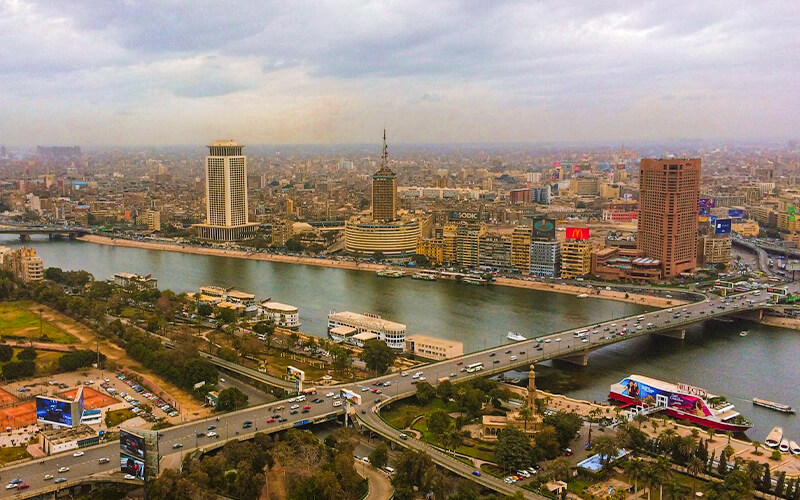Philae Temple
The Philae Temple has always had an ethereal ability to display its beauty most beautifully, like a mirage that emerges from the Nile and settles on its banks. Philae’s beauty has enthralled many explorers and travelers worldwide.
If you’re looking to spend a fantastic vacation in Egypt check out our Egypt Excursions with our qualified Egyptologist with the best Egypt travel guide in Egypt.
Where is the Philae Temple located?
The Temple of Philae is on an island in the Aswan Low Dam reservoir, below Lake Nasser and the Aswan High Dam.
Philae Temple History
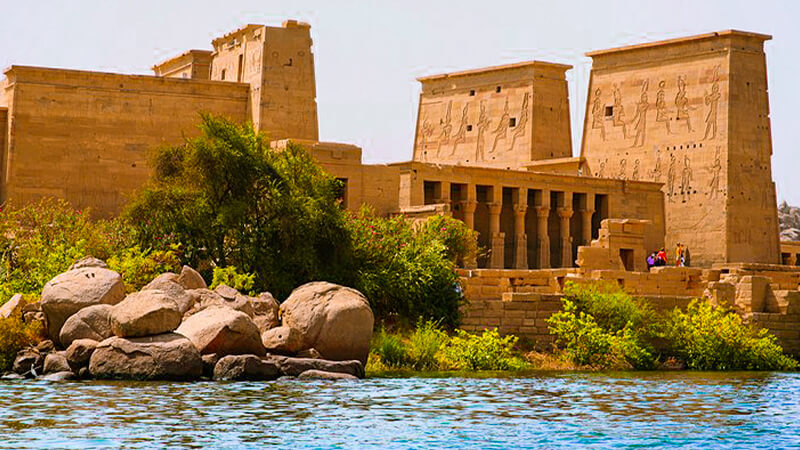
Philae Temple surrounded by the Nile River
The island of Philae was significant to the ancient Egyptians because of its unique location. It was a natural border between the island of Aswan and the island of Philae, and Egyptian texts called it the dividing line.
Many of the buildings in the Temple of Philae date back to the Ptolemaic period, which was from 332 to 30 BC. The most famous of these is the temple of Philae that Ptolemy II Philadelphus built for Isis, the mother of Horus, the ruler of the monarchy, where the birth of Horus was celebrated, and Isis was shown nursing Horus in the bushes.
The Temple of Isis is one of the most long-lasting ancient Egyptian temples because it kept doing its job until the Byzantine King Justinian, who ruled from 527 to 565 AD and closed all pagan temples, shut it down. In the year 394, the temple was turned into a church, and many inscriptions from the temple were destroyed.
Next to the Temple of Isis is a temple to Hathor. It was built by Ptolemy IV Philomotor, who ruled Egypt from 180 to 145 BC, and Augustus, the first Roman emperor, from 30 BC to 14 AD. The chapel built by Trajan between 98 and 117 AD and placed in front of the Temple of Philae is still there, but its roof is gone.
Philae Temple Architecture
An Overview of Philae Temple

Entrance of Philae Temple
The first tower leads to the entrance to the Philae temple. The Birth House is a structure located on the western side of the courtyard. This structure was dedicated to Hathor and Isis to commemorate the birth of her son, Horus. Arcades on all sides surround it. The second tower’s spectacular entryway is 32 meters long and 12 meters high. In front of it are the ruins of a small chapel that formerly stood here. There are also a few Christian artworks that have lost their color.
An Inside Look at Philae Temple
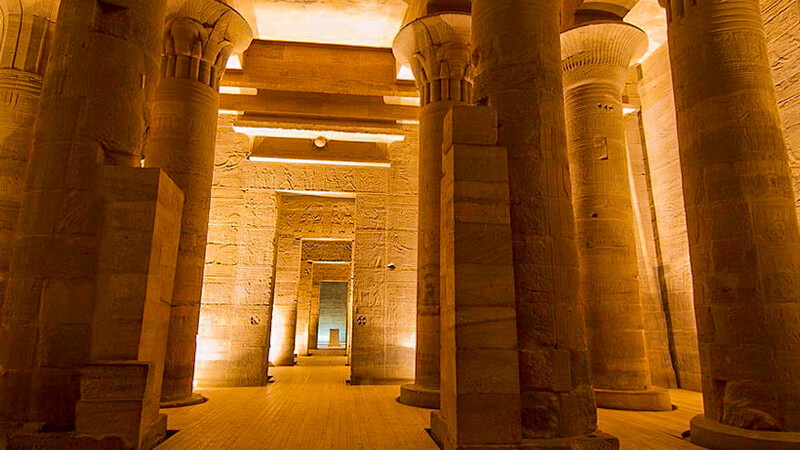
A Look Inside Philae Temple
The Temple of Philae’s first chamber, formerly divided from the court by screens, has eight columns. Numerous Coptic crosses and Greek inscriptions can be found in this chamber as proof of the temple’s conversion to a Christian church during the Byzantine era and Bishop Theodore’s authority. A description honoring the 1841 archaeological expedition to Philae may be found above the entryway.
In the top relief on the south wall, above the entryway, Nephthys and Isis are shown giving Horus, seated on a bench between them, the crowns of Lower and Upper Egypt in the top relief. Two unfinished obelisks to the left of the entrance show the king transferring land. The source of the River Nile is depicted in excellent relief on the right.
Top Philae Temple Facts
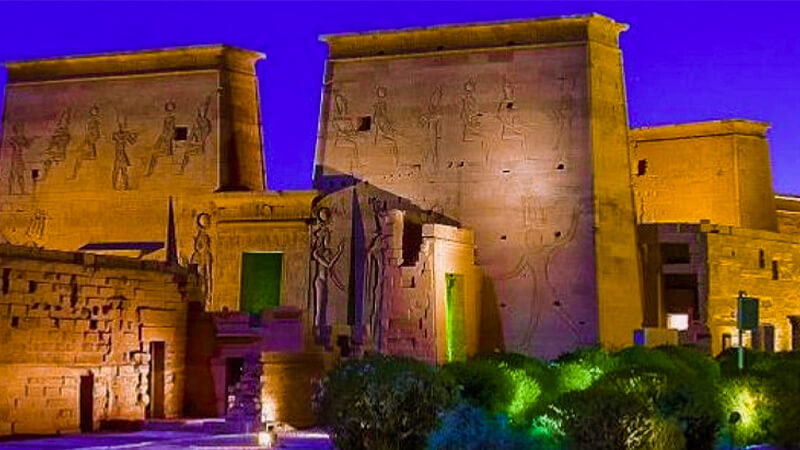
Light and Sound in Philae Temple
- The Philae Temple, which honors the Egyptian goddess Isis, has been put back together in a picturesque setting to replicate its original location on the island of Philae.
- During the UNESCO campaign in the 1960s to conserve monuments submerged by the Nile while building the Aswan High Dam, the remnants of Philae were moved to the neighboring island of Agilika, which is 500 meters from the original island of Philae.
- The Greek word “Phila,” which means “beloved,” is where the name “Phil” originates. It was referred to as “Anas Al-Wujud” in Arabic literature, about the Anas Al-Wujud fable found in the “One Thousand and One Nights” collection of folktales. Regarding its name in ancient Egyptian and Coptic, it is “Bilak,” which signifies the terminus or the end because it was Egypt’s southernmost limit.
- The Philae Temple, completed about 690 A.D., is widely regarded as the final ancient Egyptian temple to be built in the classical style. It was constructed in her honor and served as a superb illustration of the type of worship based on the story of Isis and Osiris.
- The Egyptians and Nubians regarded the Temple of Philae as the most sacred of all temples. This was because the god Osiris was interred on the island where the Philae temple stood. Since they knew priests were the only humans allowed to live there, even fish and other marine creatures avoided the island’s shoreline.
The Philae Temple, like all other famous historical attractions in Egypt, features a sound and light show, but it is often considered the best of the bunch. It’s hard to do justice to the atmosphere created by the island’s ruins lit up by floodlights.
Check our article about How to choose the best Nile Cruise in Egypt and don’t miss to book one of the Egypt Nile Cruises with us and check our Egypt Vacation Packages.

